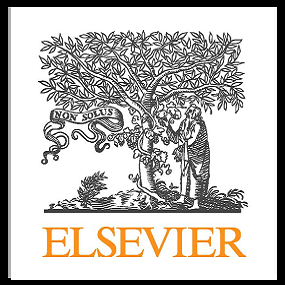دانلود رایگان مقاله مدیریت درآمد، استراتژی کسب و کار و خطر ورشکستگی – سال 2020


مشخصات مقاله:
عنوان فارسی مقاله:
مدیریت درآمد، استراتژی کسب و کار و خطر ورشکستگی: شواهدی از اندونزی
عنوان انگلیسی مقاله:
Earnings management, business strategy, and bankruptcy risk: evidence from Indonesia
کلمات کلیدی مقاله:
مدیریت سود، استراتژی کسب و کار، خطر ورشکستگی، حسابداری، مدیریت صنعت، مدیریت کسب و کار، مدیریت استراتژیک، مدیریت ریسک، کسب و کار
مناسب برای رشته های دانشگاهی زیر:
مدیریت
مناسب برای گرایش های دانشگاهی زیر:
مدیریت مالی، مدیریت کسب و کار
وضعیت مقاله انگلیسی و ترجمه:
مقاله انگلیسی را میتوانید به صورت رایگان با فرمت PDF با کلیک بر روی دکمه آبی، دانلود نمایید. برای ثبت سفارش ترجمه نیز روی دکلمه قرمز رنگ کلیک نمایید. سفارش ترجمه نیازمند زمان بوده و ترجمه این مقاله آماده نمیباشد و پس از اتمام ترجمه، فایل ورد تایپ شده قابل دانلود خواهد بود.
قسمتی از مقاله انگلیسی:
1. Introduction
Predicting, measuring, mitigating and assessing bankruptcy risk of a company has been a long-standing focus for investors prior to investing their capital. This is because investment provides means to achieve value maximization in terms of either capital gains or dividend payment. Nevertheless, maximization of value can only happen if capital providers selectively choose a profitable and sustainable business from which they can get the maximum portion of business income. Bankruptcy risk by companies is a “hot topics” in management, business and accounting literature due to its implications for stakeholders’ decisions (Lukason and Camacho-Minano, 2019 ~ ). Bankruptcy risk is risk for businesses being unable to meet their obligation, necessitating action through legal means of filing for bankruptcy to either reorganize their debt or liquidate their assets to meet such obligation (Bryan et al., 2013). Given that bankruptcy affects creditors, employees, managements, society, and shareholders, assessment of bankruptcy risk and factors that have an effect on bankruptcy risk is of major importance for businesses’ stakeholders, in particular, shareholders. One practice that obscures assessment of bankruptcy risk is earnings management. Earnings management occurs when management exert their influence to deliberately alter the truth and fairness of a financial statement with the purpose of either concealing real economic condition or attaining private gain out of contractual outcomes which rely on accounting numbers (Healy and Wahlen, 1999). Although earnings management does not belong to fraud, as it is still in accordance with the prevailing financial reporting standards of IFRS and GAAP (Stolowy and Breton, 2004) and is frequently used as a strategy in financial reporting to the extent that it is still capable of providing value-relevant information (Kwag and Stephens, 2009), when earnings management obscures investors’ rational calculation, the devastating effect is undeniable since it can degrade the quality of information related to profits presented in the financial statements. The low quality of information contained in the financial statements will adversely affect the company’s financial performance (Soewarno, 2018). In 2002, PT. Kimia Farma, Tbk, an Indonesian pharmaceutical state-owned company, received financial punishment after deliberately inflating its earnings as much as IDR 3.6 billion (Tempo, 2003). In September 2015, Toshiba Corporation was proven guilty of overstating its earnings as much as USD 2 billion over a seven-year accounting period, which, in turn, led to the resignation of its CEO and President of Toshiba Corporation, Hisao Tanaka, and inflicted financial loss on its investors (Addady, 2015).



